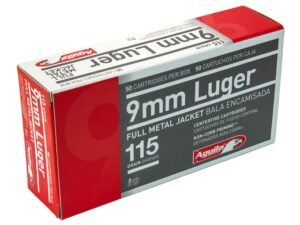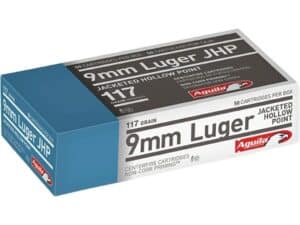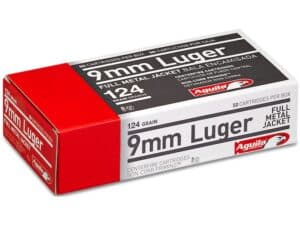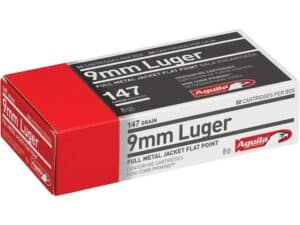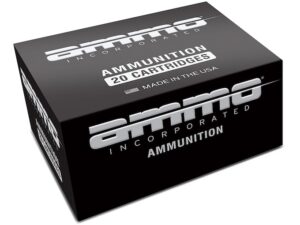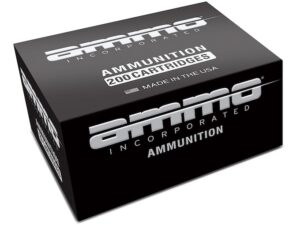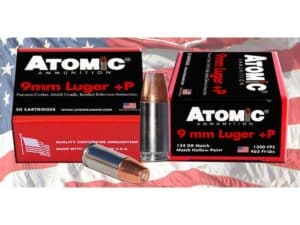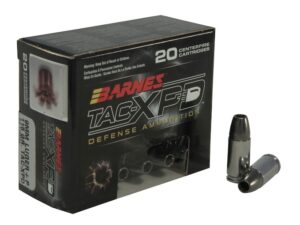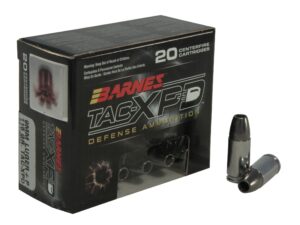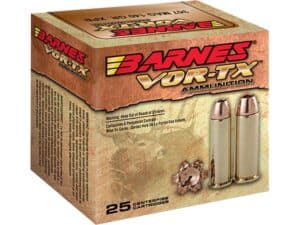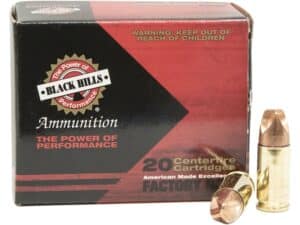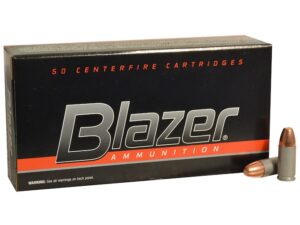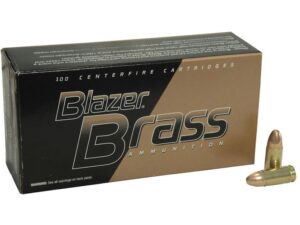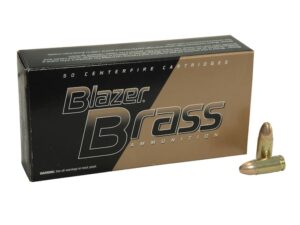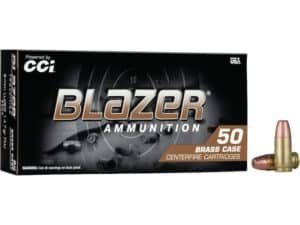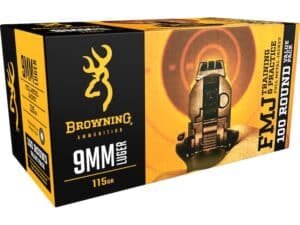9mm Ammo for Sale
-
9mm Ammo for Sale
500 Rounds of AGUILA AMMUNITION 9MM LUGER 115 GRAIN FULL METAL JACKET 1000 ROUND
Original price was: $550.00.$480.00Current price is: $480.00. Add to cart -
9mm Ammo for Sale
500 Rounds of Aguila Ammunition 9mm Luger 117 Grain Jacketed Hollow Point For Sale
$530.00 Add to cart -
9mm Ammo for Sale
500 Rounds of Ammo Inc. Ammunition 9mm Luger 115 Grain Jacketed Hollow Point Box of 20 For Sale
Original price was: $650.00.$560.00Current price is: $560.00. Add to cart -
9mm Ammo for Sale
500 Rounds of Ammo Inc. Ammunition 9mm Luger 124 Grain Jacketed Hollow Point Box of 20 For Sale
Original price was: $500.00.$400.00Current price is: $400.00. Add to cart -
9mm Ammo for Sale
500 Rounds of Atomic Ammunition 9mm Luger +P 124 Grain Bonded Jacketed Hollow Point For Sale
Original price was: $600.00.$480.00Current price is: $480.00. Add to cart
Looking for the best deals on 9mm ammo? Look no further than Firearmssite.com. We carry a wide variety of 9mm ammunition in bulk, so you can get what you need and save big! Our 9mm ammo is some of the cheapest on the market, so take advantage while supplies last. Whether you’re a law enforcement officer or civilian shooter, we have the perfect 9mm ammo for your needs. Order now and experience the difference that quality makes!
To shop 9mm ammo in bulk, check out our 9mm bulk ammo listings. The 9mm Ammo is a mild recoil and excellent accuracy when as compared to other cartridges of its type. You can purchase 500-1000 rounds of 9mm ammunition for a cheap price at Firearmssite.com
Bulk 9MM Ammo for Sale
The 9mm cartridge was first developed by Georg Luger in 1902. Since then, it has become the most sought-after handgun round on the planet, with more than 60 percent of law enforcement agencies around the world utilizing it. The 9x19mm Luger offers low recoil and excellent accuracy compared to other cartridges of its type. At Firearmssite.com, you can get the 9mm ammo you need at an affordable price. Whether you’re looking for “500 or 1000 rounds of 9mm ammo”, we have the perfect product for you!
Our selection of bulk 9mm ammo offers superior performance and value compared to other brands on the market. We take pride in our selection and quality assurance, so you can be sure that every round you buy from us will fire as expected. Trust Firearmssite.com for all your 9mm ammo needs!
Order 9mm Ammo Online Today!
At Firearmssite.com, we make it easy to get the high-quality 9mm ammo you need at a price that’s right. You don’t have to spend a ton of money to get the best ammo for your needs. We offer bulk 9mm ammo in various sizes, so you can find exactly what you need and save big.
Shop now at Firearmssite.com for the best deals on bulk 9mm ammunition. Order now and experience the difference that quality makes! Don’t forget to check out the rest of our selection – we have a great variety of handgun, rifle and shotgun ammo at unbeatable prices. Shop now and save!
Reasons to Buy 9mm Ammo Online
Apart from its precision, one of the major factors that led to the popularity of 9mm ammunition is that it holds a massive capacity in magazines. Other rounds and guns that were available at the time, including the 1911 and the .38 Special ammo, were hindered by their capacity and performance.
The 9mm cartridge permits a larger magazine to fit inside a smaller gun while still delivering performances superior to the competition. As time passed, as the cartridge was made to compete against other calibers, it was a standard-bearer. The popularity of guns like the Glock 19 created a boom in the use of polymer pistols that fire strikers and the use of 9mm rounds.
It is mostly called, 9mm Luger or 9mm NATO, 9mm Parabellum, 9 millimeter or just plain 9mm. 9x19mm ammunition is the most well-known cartridge used by handguns worldwide, with over 60% of law enforcement agencies around the globe employing this ammunition. The significance played by 9mm Luger bullets during World War I and its continuing popularity in the present proves its capability as an effective and efficient cartridge.
However, the 9mm’s path from a cartridge designed for submachine guns and perhaps, one of the most controversial self-defense ammunitions around the globe is one of explosive growth. It continues to be a major part of the modern world, which has been around for more than 100 years after its creation.
Development of 9MM Ammunition
It was in 1902 that DWM gun designer Georg Luger invented his 9mm Parabellum as an accessory cartridge designed specifically for the DWM Luger semi-automatic pistol, also known as “the Pistole Parabellum, aka the Luger “. Luger intended the gun to be deadly at 50 meters.
The new caliber is a step up from the handgun ammunition of the past, which was heavy and bulky. Today this compact cartridge comes with less recoil and permits easy handling. It’s light, precise, and due to its compact size, handguns chambered for 9mm have much larger cartridges than handguns chambered with larger calibers.
When WWI began to erupt and war raging, the first submachine guns were developed and designed to handle 9mm ammunition due to their capability to penetrate field gear. Fully automatic, magazine-fed carbines and submachine guns fired up to 900 rounds per minute.
After the advent of the Browning Hi-Power in 1935 and its popularity during WWII, The 9x19mm’s popularity spread. As time went on, the use of the gun grew to include not only military but also police departments and civilian self-defense. However, the milestones of the 9mm did not end there; They continued to be used in:
- NATO took the 9×19 Parabellum in 1955 as their official sidearm cartridge
- The U.S. Military is exchanging the old .45 ACP ammunition for 9mm cartridges to be their primary cartridge.
- Many of the nation’s largest police forces, such as New York City and Los Angeles, have adopted the 9mm cartridge, superior to the .38 revolver.
- The Federal Bureau of Investigation returned its 9mm parabellum in 2014 after abandoning it for a short period to switch to more contemporary 10-mm cartridges.
In the 90s, many gun owners for the general public retreated from handguns such as the .38 Special and .357 Magnum, preferring semi-automatic pistols with 9mm. In terms of 357 against. 9mm the 357 has greater stopping power, and 9mm is less recoil-prone and has comparable ballistics, making it a popular choice for self-defense.
The availability of ammunition has followed this trend as 9mm cartridges have become much more common and easy to locate than other cartridges. In the fourteenth issue of Cartridges of the World, 9mm ammunition led the market overall in 2013, representing 21.4 percent of the cartridge market. It was then .223 Rem at 10.2%.
9mm Ammo Types & Their Uses
9mm Ammunition was initially intended to be used for the military or law enforcement agencies, as well as for self-defense, there’ve been instances when the 9mm cartridge has sparked debate about its insufficient stopping capacity, particularly in comparison to .45 ACP ammunition.
However, with the advancement of technologies, bullet for 9mm is available in various forms to meet multiple needs, including combat, on-duty defense, and action.
- Unjacketed ammo has bullets made of plan lead that lack outer casings, making them slower and less effective.
- Full-metal jackets (FMJ):9mm FMJ ammo is the most popular and includes the lead bullet encased in copper or some other hard metal. They’re used primarily for range and target shooting.
- Jacketed Hollow Point (JHP): 9mm JHP ammunition includes an aluminum bullet with a hollow point inside, but it’s still encased in copper. These bullets expand upon impact, increase stopping power, and are utilized by law enforcement, military, and self-defense.
- Open-tip match (OTM): OTM ammunition is specifically designed for shooting in competition, and target shooting, Similar to hollow points but not as dangerous They are reliable and reliable.
- Tips for ballistics: Hollow point ammo with a plastic tip. 9mm ballistic cartridges are made to hunt with pistols, offering stopping force and range
Beyond the differences in bullet design, there are variations in the weight of bullets, the casing, pressure, and weight. The majority of FMJ 9mm ammunition is between 115 to 147 grams. Available ammunition for the range is 115 grams in 9mm, NATO is 124 grams, and some self-defense rounds in 9mm are heavier, at 135 grams.
Casings used on 9mm cartridges, sometimes called the shells, are constructed from steel, brass and aluminum. Brass is the most popular due to its ease of reloading, whereas steel is employed to reduce costs. Aluminum is becoming more sought-after due to its low cost and lightweight, but it’s not able to be reloaded, which makes the majority of shooters choose to use conventional brass guns.
There’s a distinct difference when using ammunition that is more powerful in terms of its pressure when loaded. 9mm NATO cartridges, self-defense, and 9mm +P or +P+ rounds. All four kinds of cartridges are fired hotter and boost power because of the higher pressure.
Different Types of 9mm Cartridges
Although 9mm Luger ammunition (aka ” 9mm Parabellum” and “9x19mm“) is the most used cartridge in handguns for military and submachine guns, it’s not the only 9mm ammunition available. Various ammunition featuring the 9mm bullet have been produced since it was first introduced in 1902, and some are superior to others.
- 9mm Ultra: Also called 9mm Police, These cartridges were developed to be used by the German police force. They fall in between 9mm Luger as well as .380 auto. The shell measures one millimeter smaller than the Luger and one millimeter longer than the .380, which results in the casing being .04 inches less than the 9x19mm. While this cartridge isn’t easy to locate within The U.S., several excellent firearms are chambered for it, such as the Sig Sauer P230 and the Benelli B76 auto.
- 9mm Bayard Long: This, 9mm ammunition, was created to fit it to be used with the 1911 Model Bergmann-Bayard pistol, which was the primary sidearm of the Danish military at the time. While this cartridge (and the firearms it was designed for) were never produced by the U.S., some Spanish pistols were scheduled for 9mm Bayard Long, and the ammo was popular following World War II due to surplus military equipment.
- 9mm Browning Long: The 9mm Browning Long was a European cartridge developed to be used in the FN Browning 1903 Model pistol that was made an official weapon of Sweden after 1907. Many guns of this type were made available to the general public following WWII as surplus weapons for military use, and a majority have been modified to shoot .380 ACP ammo.
- 9mm Mauser: The 9mm Mauser was utilized briefly in 1908 when it was first developed for its Export Model Mauser 1908 until the gun was retired in 1914. About a quarter-inch more significant than the 9mm Luger, this rimless gun came back in WWI in the form of submachine guns adapted to the cartridge.
- 9mm Winchester Magnum: Released in 1988, The 9mm Winchester Magnum was developed to complement the stainless-steel Wildey gas-operated pistols used in silhouette contests.
- 9mm Glisenti: The Italian military utilized 9mm Glisenti during WWI and WWII. While it is very similar to the 9mm Luger, they’re interchangeable. The Glisenti has a much smaller load than the Model 1910 Glisenti automatic pistols that were designed to handle aren’t able to take the force of the 9mm Luger.
- 9mm ABC Mi-Bullet: Made by Advanced Ballistics Concepts, LLC, the 9mm Mi-bullet is a multi-part bullet made of Kevlar tethers that unlock and expand, which allows this 9mm bullet to behave like shot-shells. The cartridge is designed as a self-defense gun. It reaches its maximum size at around 12 feet and keeps its pattern for 21 feet, which increases the chance of striking an attacker.
- 9x21mm: In countries such as Italy, Mexico, and France, The government has a ban on its citizens from carrying firearms that are chambered with military calibers, which means that 9mm Lugers are illegal. 9mm Luger prohibited. To counter this issue, the 9x21mm was invented with a length of just 2 millimeters more significant than the 9x19mm.
- 9mm Steyr: Designed for the Austrian military pistol, the Steyr Model 1912 Auto 9mm Steyr is longer than the Parabellum and comes with a casing length of 23 millimeters. The cartridge is widely used in Austria. The cartridge is also used in Romania as well as Chile.
- 9x23mm Winchester: Winchester launched the 9x23mm Winchester ammunition in 1996. It was designed to comply with the International Practical Shooting Confederation (IPSC). A high-pressure cartridge 9×23 Winchester appears like an extended 9mm Luger; However, it is a different cartridge with many internal distinctions.
- 9mm Federal: The 9mm Federal was developed as a rimmed 9mm Luger intended for revolvers, specifically, the PitBull from Charter Arms, a double-action five-shot revolver. The gun was not made after the cartridge’s invention in 1989 when Charter Arms went out of business (although it was later revived).
- 9mm Kurz: The 9mm Kurz utilizes a 9mm bullet inside a smaller, 17mm casing. John Browning developed the ammunition as early as 1912. This ammunition is often referred to by the name 9mm Browning Short but is mainly referred to as .380 ACP.
9mm ammunition has come a lot since its inception nearly 100 years ago and has dominated the ammunition market and police agencies until today. With its variety of cartridges, a variety of applications, a variety of ammo types, price as well as its ease of use, and the ability to be used in various firearms, it is inevitable that the 9mm Luger (or what you’d prefer to refer to it as) will be one of the most well-known calibers in the many years to come.
9mm Ballistics: Chart of Average 9mm Luger Ballistics
Please Note: that this information is sourced directly from the manufacturer and should be used for informational purposes only. The actual ballistics you get from the firearm you own may vary from the ballistics stated. Additionally, ballistics may differ between lots for identical brands and load.
| 9mm Bullet WEIGHT | Muzzle VELOCITY (fps) | Muzzle ENERGY (ft. lbs.) | Mid-Range TRAJECTORY (in.) | Barrel Length (in.) | |||||
|---|---|---|---|---|---|---|---|---|---|
| Muzzle | 50 yds. | 100 yds. | Muzzle | 50 yds. | 100 yds. | 50 yds. | 100 yds. | ||
| 80 Grain | 1445 | n/a | n/a | n/a | 385 | n/a | n/a | n/a | n/a |
| 88 Grain | 1500 | 1190 | 1010 | 440 | 275 | 200 | 0.6 | 3.1 | 4″ |
| 90 Grain | 1360 | 1112 | 978 | 370 | 247 | 191 | n/a | n/a | 4″ |
| 92 Grain | 1325 | 1117 | 991 | 359 | 255 | 201 | -3.2 | n/a | 4″ |
| 95 Grain | 1300 | 1140 | 1010 | 350 | 275 | 215 | 0.8 | 3.4 | 4″ |
| 100 Grain | 1180 | 1080 | n/a | 305 | 255 | n/a | 0.9 | n/a | 4″ |
| 105 Grain “Guard Dog” | 1230 | 1070 | 970 | 355 | 265 | 220 | n/a | n/a | 4″ |
| 115 Grain | 1155 | 1045 | 970 | 340 | 280 | 240 | 0.9 | 3.9 | 4″ |
| 123 Grain | 1110 | 1030 | 970 | 340 | 290 | 260 | 1 | 4 | 4″ |
| 124 Grain | 1150 | 1040 | 965 | 364 | 298 | 256 | -4.5 | n/a | 4″ |
| 125 Grain | 1110 | 1030 | 970 | 340 | 290 | 260 | 1 | 4 | 4″ |
| 135 Grain | 1010 | 960 | 918 | 306 | 276 | 253 | n/a | n/a | 4″ |
| 140 Grain | 935 | 890 | 850 | 270 | 245 | 225 | 1.3 | 5.5 | 4″ |
| 147 Grain | 990 | 940 | 900 | 320 | 290 | 265 | 1.1 | 4.9 | 4″ |
| 90 Grain +P | 1475 | n/a | n/a | 437 | n/a | n/a | n/a | n/a | 4″ |
| 115 Grain +P | 1250 | 1113 | 1019 | 399 | 316 | 265 | 0.8 | 3.5 | 4″ |
| 124 Grain +P | 1180 | 1089 | 1021 | 384 | 327 | 287 | 0.8 | 3.8 | 4″ |
9mm Ammo Comparison
9mm luger was originally designed to be handgun calibers. 9mm has changed its design several times over its 115 or so years. Through that time, it’s been seen in the barrels of large firearms such as pocket guns, handguns, carbines, revolvers, and submachine guns.
The wide range of uses for one caliber can leave shooters who purchase 9mm ammunition in confusion about the 9mm Luger and 9mm Luger. 9mm NATO or 9mm Luger in comparison. 9mm Parabellum or 9x19mm. 9mm. The most straightforward answer is that it’s the same, except NATO ammunition is slightly heavier.
The 9x19mm Parabellum is an ammunition cartridge with the bullet’s 9mm diameter and a casing that is 19mm long. Parabellum is the name given to it. “Parabellum” comes from the motto of the first company that produced 9x19mm ammo, the German manufacturer of munitions, the Deutsche Waffen und Munitionsfabriken (DWM). “The DWM’s Latin motto”Si vis Pacem, Para Bellum “Si vis Pacem, Para Bellum” “ means “If you want peace, prepare for war,” which is why Parabellum means “prepare for war.”
The cartridge is usually referred to by its designation as 9mm Luger and is often associated with the name of its creator (in other terms that the 9x19mm Parabellum and the 9mm Luger is the exact same ammunition). Sometimes it’s 9mm NATO. It’s exactly the same ammunition. However, it has a larger bullet – 124 grain (gr) compared to 115 gr. It is also packed to higher tension (think +P) than traditional training or range rounds.
This cartridge, different from many other ammunitions, features the casing tapering slightly. When stacking bullets side-by-hand, note the in between the lower part of the casing and the top. This improves the precision and reliability of feeding ammunition from the magazine into the gun, which allows it to be done rapidly and consistently.
Bulk 9MM Ammo for Sale
FAQ on 9MM Ammo
At Firearmssite.com, we aren’t only focus on selling our guns or Ammunition we have in stock, we are also focused in answering the most frequently asked questions on our stock list and also helping our customers in picking the best gun and ammo deals. Below is the most generic questions on 9mm ammunition , looking for other alternative questions than ammo, browse our website to find the relevant information or send us a message via the live chat or contact us page.
Is 9mm Ammo Good for Self Defense?
One of the reasons that make 9mm ammunition and the handguns chambered for it so well-liked is that they’re effortless to use but still efficient as a self-defense weapon. Although not the most potent ammo cartridge, 9mm ammunition gives you more control and speedier follow-up shots. This can help beginners and shooters with more petite frames manage recoil, which is a challenge with larger calibers.
For concealed carry (CCW) firearms, 9mm handguns are still quickly shot, even in compacts. They are easy to hide around the body and are particularly suitable when used by ladies. In the age of modern ballistics, self-defense ammunition is just as deadly as the .40 Smith and Wesson and a .45 ACP cartridge.
In 2014 the FBI issued a report that compared the three cartridges and concluded that the 9mm was, in actual fact, identical in its effectiveness as well as stopping force. It also has less recoil. the ability to control by all 9mm is an excellent universal weapon for agencies such as the FBI and civilians.
To defeat marksmanship, it’s more than just about the strength of ammo; it’s about shot placement. In many cases, even for those who frequently shoot high-caliber guns, shooting using a 9mm handgun will be much more precise.
What is the difference between 9mm and 9mm Luger ammo?
9mm as well as 9mm Luger is the same ammunition that is officially recognized in the sporting arms and Ammunition’s Manufacturers Institute (SAMMI) as 9mm Luger.
9mm refers to the bullet’s diameter, and the 9mm Luger is derived from the Luger semi-automatic pistol, which was the gun that the ammunition was first designed (designed by Georg Luger, German inventor Georg Luger). The bullet is also known by the name 9mm Parabellum and is derived from the manufacturer Si vis Pacem para Bellum (“If you are seeking peace, you must prepare for battle”).
How much does 9mm ammo cost?
The cost of 9mm ammo is contingent on several variables, such as the number of rounds in each box, the kind of ammunition, the manufacturer, and if the ammunition is available for sale. Specialty rounds, for instance, bullets that have ballsistic tips, may cost more. For example, Magtech full metal jacket ( FMJ) ammo designed explicitly for shooting range can be more affordable than Hornady JHP jacketed hollowpoint ( JHP) rounds intended for self-defense.
What is the difference between 115 grain and 124 grain 9mm ammo?
Grain (often known as gr) refers to the mass of a particular bullet. The bullet of 115 gr is the most common weight for 9mm Luger, and the slightly heavier bullet that weighs 124 gr is the military-style 9mm NATO. If the other elements are equal, the lighter 115 gr 9mm round will have a more incredible muzzle speed, while the bullet of 124 gr will have more muzzle power.
What is the best 9mm ammo?
The best 9mm ammo is based on the shooter’s needs, requirements, preferences, and needs. FMJ ammo could be the best choice for shooting targets as it penetrates targets and is less costly. For those who carry concealed for self-defense, These rounds aren’t the best choice since they are susceptible to being over-pierced and have lower stopping power, making the defense or duty JHP round the better choice.
What is the difference between FMJ and JHP 9mm ammo?
FMJ is a shorthand for Full Metal Jacket and describes the bullet with a lead core fully coated with a more rigid metal, usually copper. The full-metal jacket helps reduce the amount of lead within the barrel and allows the bullet to maintain its form as it moves toward its intended location. JHP refers to Jacketed Hollow Point and describes a lead bullet coated in a more robust metal with a gap in the top. The hollow spot causes the bullet to grow when it hits, decreasing the chance of over-penetration and providing greater stopping power.
What is the quietest 9mm ammo?
The quiet 9mm ammunition is referred to as subsonic and is kept at speeds of less than 1,100 fps. This means that the bullet is moving faster than sound. It doesn’t produce the sound of a sonic boom or sonic crack that can be heard when shooting ammunition at high speeds.
Even though 9mm ammo is supersonic or has a rate greater than 1,100 fps, slow rounds are also available. Subsonic ammunition typically has a larger projectile or is a particular round, like the ammo that can be tangible. Magtech, Hornady as well as Sellier & Bellot as well as Sellier & Bellot, all of which manufacture subsonic 9mm ammunition.
What is the best frangible 9mm ammunition?
There are many brands of fragile 9mm ammunition available. Fiocchi can be a trusted brand for special 9mm bullets, and so is Federal.
What 9mm ammo does the FBI use?
The FBI went back to the 9mm bullet as their weapon of choice and omitted shooting the .40 S&W The agency went on the bullet with 147 grains. Speer Gold Dot G2. Like the JHP G2 round, the G2 bullet has hollow areas in the nose; however, in contrast to that of the JHP with its massive cavity, it is smaller.
The G2 is fitted with a small gap filled with high-quality Elastomer. When shooting these rounds, shooters will likely experience the same expansion pattern with a penetration range of 12-18 inches and consistently good outcomes.
What 9mm ammo does the military use?
Since the beginning of the United States in 1776, the US Military first used lead bullets and later fully metal jacket ( FMJ) ammunition. Recently, it was reported that the Armed Forces stepped up and upgraded their bullets by introducing hollow points that are jacketed ( JHP). Although there are a few options for specific military forces, most use a 9mm bullet with 147 grains.


